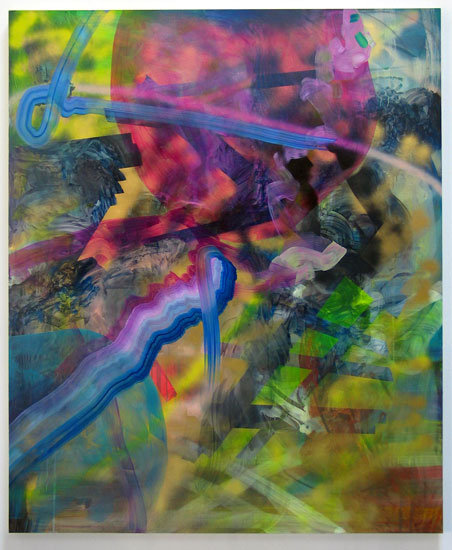Jeffrey Gibson
dal 2/3/2007 al 2/9/2007
Segnalato da
2/3/2007
Jeffrey Gibson
George Gustav Heye Center, New York
Infinite Anomaly: Tahlequah. He has created a body of paintings, sculptures, and a new installation from an history full of anguish, loss, hope, about the relationship of Native Indian people and their land.

Infinite Anomaly: Tahlequah
In 2005, artist Jeffrey Gibson began researching a small plot of land in Tahlequah,
Oklahoma, that he would one day inherit from his mother. In 1906 the land was given
to his family as part of the Federal Indian Allotment Act. “Giving” the land to
individual Indians was an acculturation act. It was meant to break apart the
collective voice of the tribes into individual landowners who, due to poverty, would
most likely sell the land back and therefore become a part of the national economy.
Jeffrey has created a body of paintings, sculptures, and a new installation from
this history full of anguish, loss, hope, and the natural beauty of the land.
“The relationship of Native people to place, historically and metaphysically, is
well documented by scholars and expressed at length in the visual and literary arts.
Indeed, this relationship to “the land” is often cited as the very root of our
indigeneity. Geography has shaped and defined Native cultures, literally and
conceptually, over countless generations. Our origin stories and understanding of
the universe often relate to geographical features in the landscape, and the
material culture of each community is based on the natural environment of our
homelands. For more than 500 years, land has also been a site and source of conflict
and struggle with outsiders—be they non-Indian settlers seeking farmland, or
commercial enterprises eager to exploit natural resources. As a subject for Native
artists, then, the land/landscape is laden with history and expectation. Land is
home, culture, and identity, but it also represents violence, isolation, and loss.”
– Kathleen Ash-Milby
Selected works from this project were included in No Reservations at The Aldrich
Museum of Contemporary Art, and recent works will be included in Off The Map at The
National Museum of The American Indian, Smithsonian Institution. This project was
made possible by funding from The Creative Capital Foundation. A publication
including an essay by Hélène Cixous about The Infinite Anomaly:
Tahlequah, Oklahoma Project will be published to accompany the debut of the works
included in Off The Map. A catalog will also be available to accompany the
exhibition including essays by Kathleen Ash-Milby, Kate Morris, and Paul Chaat
Smith.
The National Museum of the American Indian
George Gustav Heye Center
One Bowling Green - New York
Hours: 10 a.m. to 5 p.m. daily
Free admission



